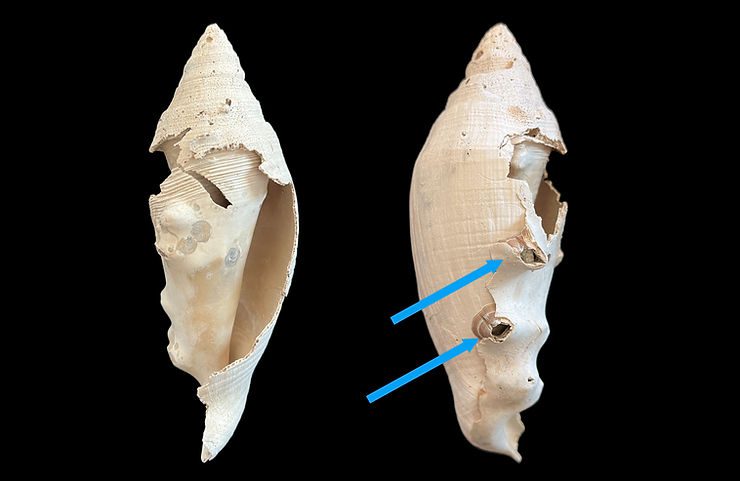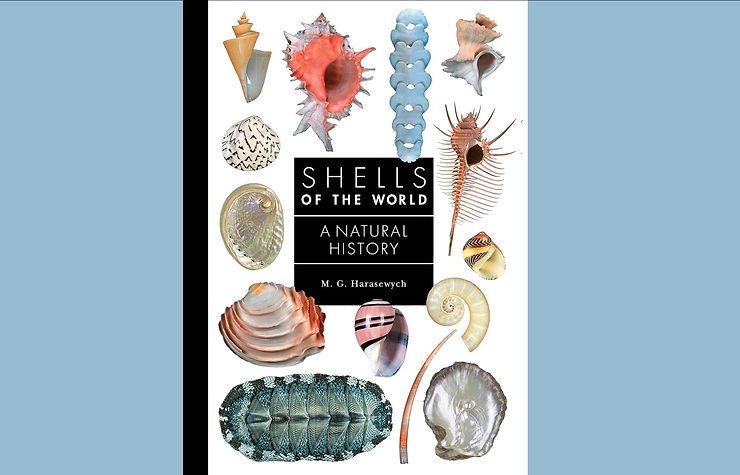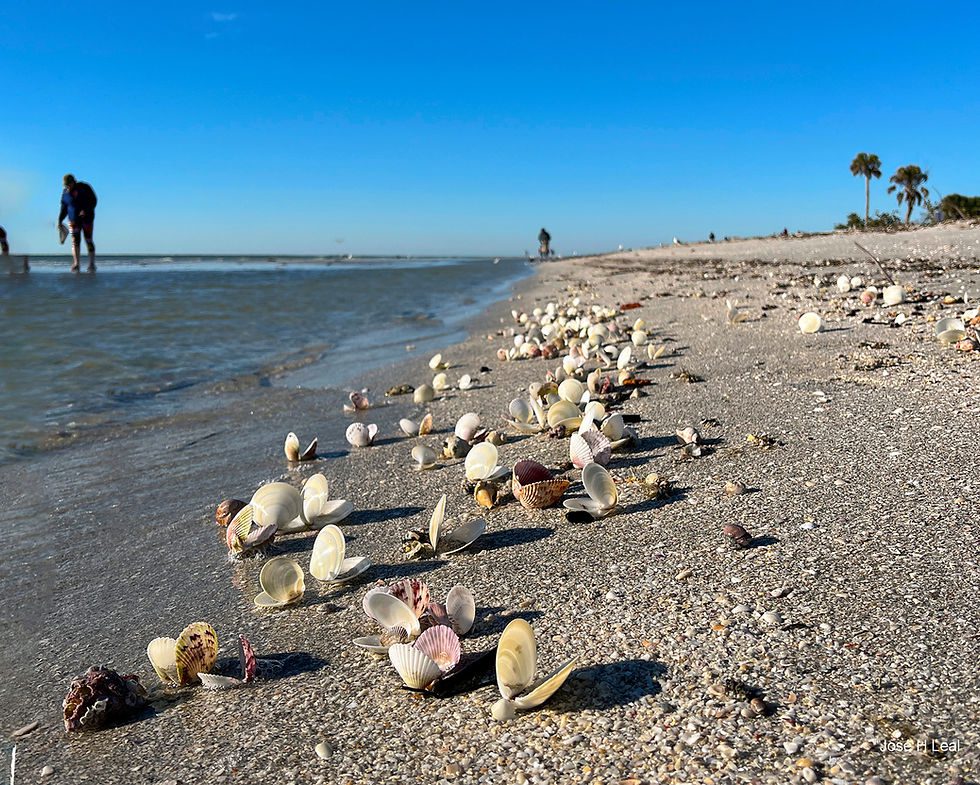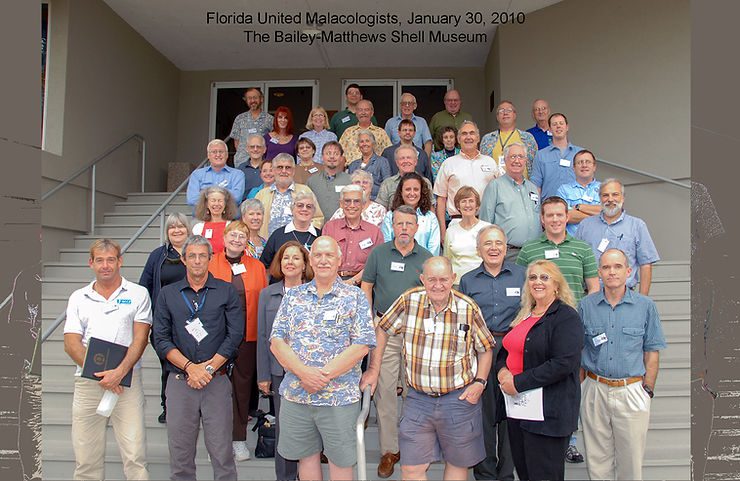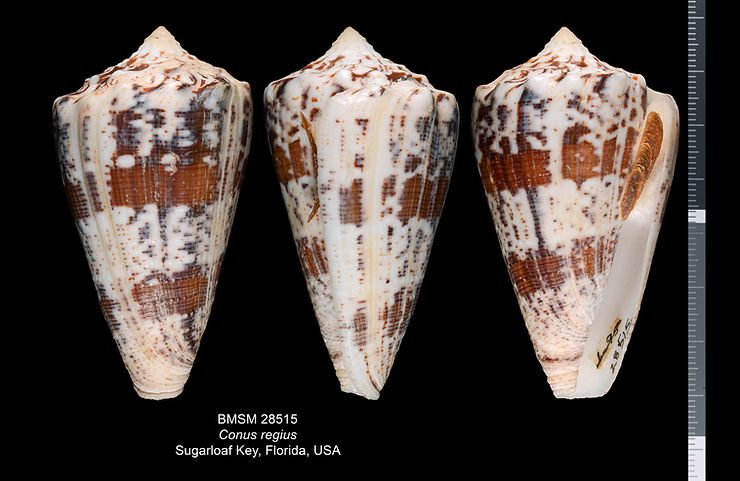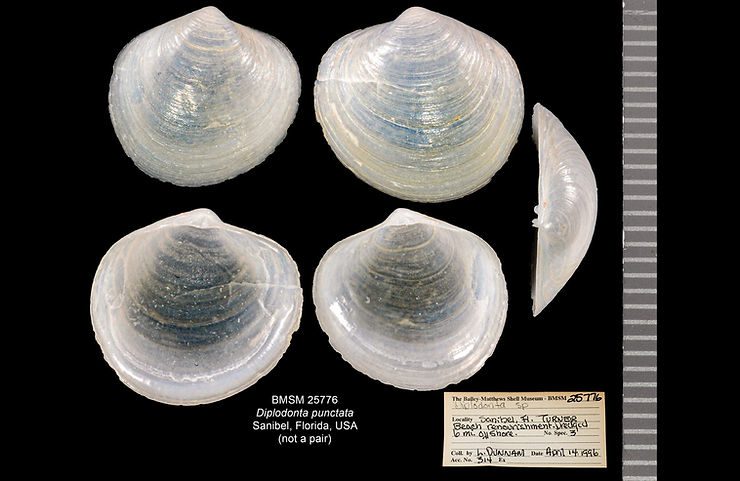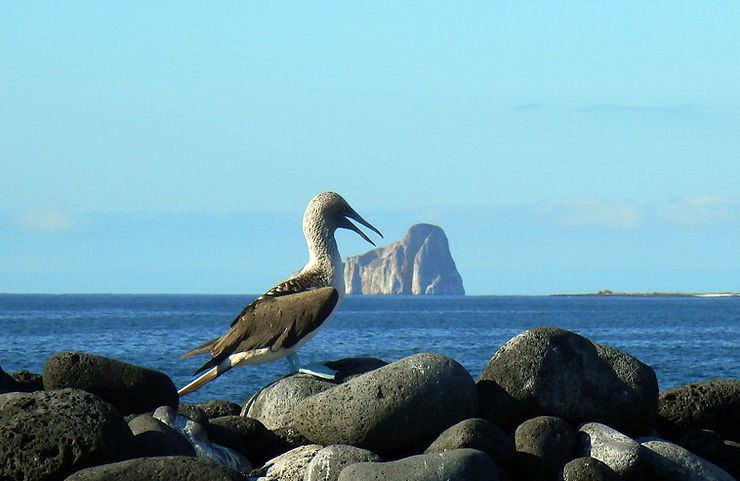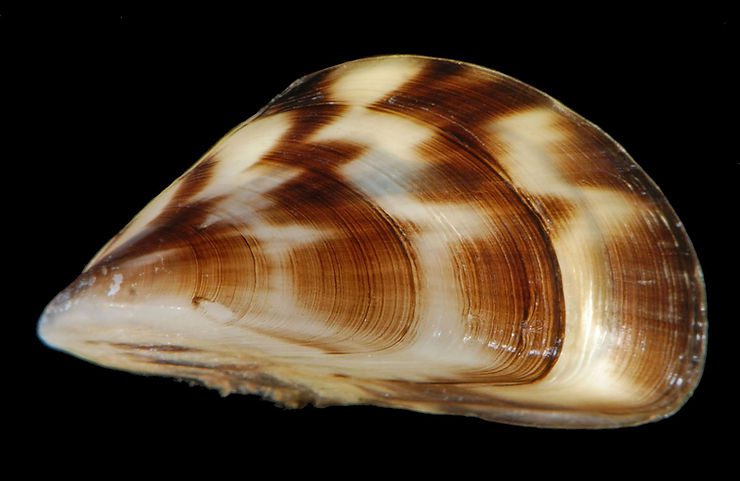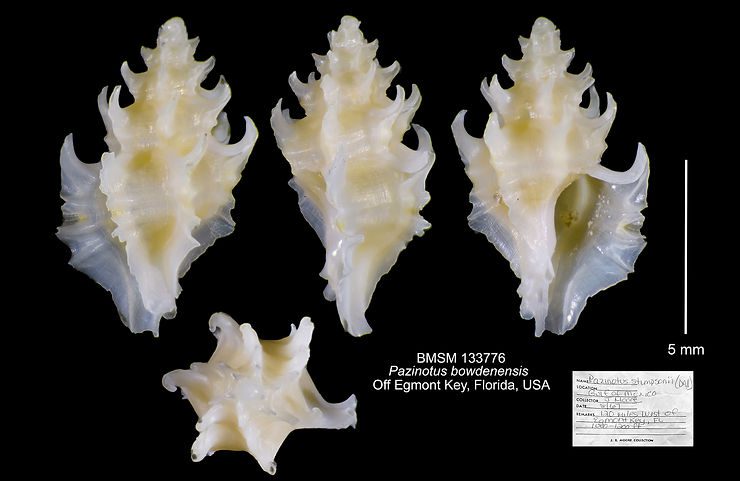
Shell of the Week: The Bowden Murex
Pazinotus bowdenensis (E. H. Vokes, 1970), reaches about 14 mm (about 0.6 inch) in height. It shows a sculpture of about 6–7 strong varices per whorl. The varices bear prominent, curved spines on whorl shoulders. The color is whitish to cream-yellow, but some shells can be translucent and very delicately colored. The species was first named by Emily Vokes from a single fossil shell from the Bowden Formation (late Pliocene) in Jamaica but has since been found living off western Florida and Alabam
